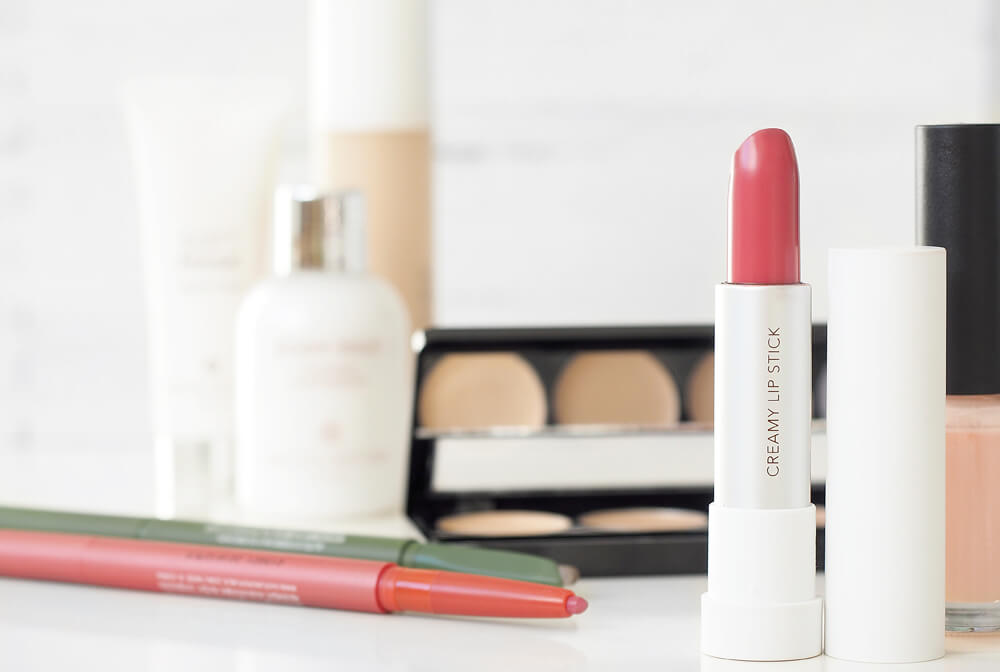
By Melissa Goodwin.
You learned in health class that the skin is the largest organ in the human body – one that we need to protect, defend, and preserve. We slather it with moisturizers, sunscreens, and perfumes. We try to keep it supple and wrinkle-free. Although the products we rub on, spritz on, and soak in may be doing the trick to make our skin look healthy, there are some who believe that those products may be threatening our health below the surface.
Are Cosmetics Safe?
The answer to this question is as complicated as trying to apply lipstick while riding a rollercoaster. Cosmetic companies would have you believe that their products are perfectly safe while green gurus such as Gwyneth Paltrow of Goop and Jessica Alba of The Honest Company warn us against anything that’s not “natural” or “organic.” Where does the truth lie? Somewhere in between.
The Skinny on Skin
As much as we think about our skin soaking up the products we apply, the skin is also a sophisticated elimination system. Its sweat glands and the sloughing of dead skin cells, a whopping eight pounds per person per year, are mechanisms by which your skin rids the body of toxins. The anatomy of the skin is also a defense against outside toxins. It has a number of structural and chemical mechanisms to stop harmful things from entering the body.
There’s an important distinction between the penetration and absorption of cosmetic products. A product “penetrates” when it makes it to the skin’s deeper layers. It is “absorbed” when it actually makes it to the bloodstream. The absorption of chemicals is what has most people concerned. While the skin does have a veritable fortress of protection in place, some skin care products do manage to be absorbed into the bloodstream. Whether or not this is harmful depends on what happens after absorption; whether the chemical is filtered out via bodily fluids, or build-up (bioaccumulation) occurs. Chemicals don’t become toxic to us unless the amounts absorbed exceed what our body is able to break down and flush out.
Skin Deep or Deeper Still
The truth is that cosmetic companies want their products to only penetrate the surface areas of the skin. That’s where the benefit to the consumer is. Antioxidants and moisture won’t benefit the skin if it doesn’t stay in the skin! The majority of skin care products are not soluble to the skin, meaning their molecules are simply too big to make it past all the barriers it has in place. Absorption enhancers are added to some products to make them skin-soluble and small enough to allow things like Vitamin C or retinol to pass through to the bloodstream.
Why Not Just Go with “Clean Beauty” Products?
The problem here is that claims of products being “natural” or “organic” are essentially meaningless as there is no regulation of these terms. The Food and Drug Administration oversees cosmetics, but that only means that they must be safe to use as directed and properly labeled. Unlike food and drugs, however, they don’t need FDA approval before going to market. The lack of US regulation of the cosmetics industry leave both industry veterans and green advocates alike calling for more stringent guidelines.
Where Do We Go From Here?
According to a recent Chicago Sun-Times article, much of the focus of clean beauty proponents has been on two preservatives – parabens and formaldehyde-releasers. Parabens is a family of chemicals used to prevent the growth of mold or bacteria, and formaldehyde-releasers are a type of preservative that slowly releases a small amount of formaldehyde in products to kill or prevent the growth of bacteria and microorganisms. These preservatives, however, serve the vital safety function of keeping the cosmetics from becoming contaminated. This conundrum is the entire controversy in a nutshell, leaving the consumer in the middle.
Determining the safety of your cosmetic choices has become a risk assessment. Understand that the dose of chemicals that become harmful is a product’s threshold. Anything under that is considered safe. And just like when shopping for the foods you eat, remember that some preservatives are necessary, but you wouldn’t want your entire diet to consist of foods laden with chemicals.
To find the sweet spot between science and peace of mind, consider checking out these resources:
- Environmental Working Group (EWG) website Skin Deep. Research their cosmetics database where products are given a hazard score by EWG based on the ingredients’ links to cancer, allergies, and other issues.
- The Campaign for Safe Cosmetics created the “Compact for the Global Production of Safe Health and Beauty Products,” through which companies that signed agreed to make all their products “free of chemicals that are known or strongly suspected of causing cancer, mutation, or birth defects.” The compact is now closed to new companies, but the Campaign for Safe Cosmetics is developing a new program. Learn more here at www.safecosmetics.org/get-the-facts/safer-cosmetics-companies.
Melissa Goodwin is the owner of Wave Health and Pain Therapy where she offers low-frequency acoustic wave pressure therapy, a drug-free, non-invasive approach to total body health and pain relief.






